[GIVE IT A GO]
When we started the “Give it a Go” series six months ago, we never expected it to culminate in someone cycling the length and breadth of Korea. But that’s where it’s taken us (to be clear, the series isn’t ending — I just assume nobody will ever give it a go as hard as I gave it a go), and here’s the story of my six-day cycling adventure crossing Korea from the northwestern port city of Incheon to the southeastern port city of Busan.
For the budding cross-country cyclist, Korea is a bit of a paradise. To start with, the cross-country route already exists, set in stone by the powers that be and allowing cyclists to wind their way from Incheon to Busan while largely avoiding busy roads. The powers that be, in this instance, are actually K Water, Korea’s government water resource development agency and an unexpected local champion of long-distance cycling.
K Water produces a cycling passport that can be picked up at a number of certification centers nationwide, including at the cross-country ride start points in Incheon and Busan.
Cyclists can use this passport to collect stamps along the route, and collecting them all will earn you a certificate and a medal. This isn’t just for the cross-country route — there are official trails across Korea and even circumnavigating Jeju Island, although only the “4 Rivers Cycling Road,” the “Korea Cross Country Cycling Road” and the “Grand Slam” will earn you a medal.
For me, the first stamp comes at Ara West Sea Lock at 8 a.m. on a Saturday in late September. I’ve arrived by car (luckily, we don’t live too far away, and my wife is a saint), and I’m staring down the barrel of 630 kilometers (390 miles) between me and Busan. I’m wearing shorts and a far-too-tight bright orange cycling jersey, and I’m carrying just one change of clothes for the next week. I’m too ignorant to be nervous, so I put one pedal in front of the other and off we go.
A quick aside about credentials before we move on: I qualified as the best person in the newsroom to take on this challenge because I cycle a 45-kilometer round-trip to work whenever the weather permits, and I once cycled the 80 kilometers to Suwon and back for a boozy weekend. I have no experience with long-distance cycling, I have no experience with hills, and I’m overweight enough that myself-plus-luggage-plus-bike is getting so close to the manufacturer’s threshold that I spend the first 100 kilometers expecting the whole thing to explode.
With all that in mind, I’m expecting to approach the week at a stately 18 to 20 kilometers per hour (11 to 12 miles per hour), putting away a couple of 100-kilometer days early before elevation and exhaustion slow me down during the week.
My first 21 kilometers take me from the sea to Seoul, along the Ara Bicycle Path that runs parallel to the Ara Waterway, a huge canal that connects the Han River to the sea before the river reaches the DMZ. I’ve ridden this route many times before and do it in a sort of sun-fueled daze, reaching the Ara Hangang Lock certification center just after 9 a.m. and switching to the Hangang Bicycle Path where I will spend the next couple of days.
I hadn’t been looking forward to cycling through the capital on a Saturday, when Seoullites flock to the river parks en masse and the bicycle paths turn into a grueling obstacle course. To make matters worse, I had completely ignored the fact that my Saturday was the day of the annual Seoul fireworks display, and by 10 a.m., the paths were already covered in tents and blankets.
Forty kilometers later, having cycled through what felt like a protracted linear music festival designed specifically to annoy me, I punched out the other side of Seoul and into the satellite city of Hanam, Gyeonggi. It was early afternoon by this point, and I’d stopped and had ramen at a convenience store for lunch, as there aren’t many restaurant options near the river in Seoul.
Running on fumes, I crossed to the north bank of the Han and powered on over the mouth of the North Han River into rural Gyeonggi. Twenty kilometers later, I pulled into the town of Yangpyeong, Gyeonggi, with 103.52 kilometers clocked on Strava. This is where I planned to spend the first night, although poor planning meant I had to lock up my bike at a local civic center and take a taxi 10 kilometers out of town to my motel.
Day 1 complete, I got my hands on some ice-cold naengmyeon and then settled down for the night in the cheap and cheerful motel I’d chosen for its view of the river, without considering location, convenience or quality.
Sunday dawned the worst way a day can dawn for the aspiring long-distance cyclist — with torrential rain. Refusing to be deterred, I still got up at 6 a.m. and took a taxi back to my bike at 7 a.m., arriving in central Yangpyeong to the growing realization that the weather wasn’t really cyclable, and my waterproof jacket wasn’t really waterproof.
What followed was a three-hour tour of Yangpyeong coffee shops, followed by three hours sitting under a shelter at the back of the Yangpyeong Library waiting for the rain to abate. The sensible option would have been to give up on the day and see what the bright lights of Yangpyeong had to offer, but I was still focused on trying to get as far as possible before an expected critical bike or body failure. Hence, as the rain slowed at 1 p.m., I set out to complete an entire day’s cycling in one wet, muddy afternoon.
The day sucked. It was grim and grey, with clouds so low you felt like you were going to hit your head. I was already soaked through when I started, and the 97.52 kilometers to Chungju, North Chungcheong, were a grueling, muddy slog. The southern stretch of the Han is extremely beautiful country, but I passed most of it in a wet daze.
I arrived in Chungju in the dark, cold, wet and with just enough time to knock back a convenience store ramen before I spent two hours trying to wash my clothes in the shower and dry them with a hairdryer. So ended Day 2.
The third day was the one I had been dreading the most. Here we leave behind the Han River and join our third leg of the trip, the Saejae Bicycle Path. Saejae is a reference to the Mungyeong Saejae mountain pass, the only place in Korea where the Great Yeongnam Road, which connected the northwest and southeast of Korea for hundreds of years, remains as intact as it was during the Joseon Dynasty (1392–1910). The route doesn’t actually go through the Saejae pass, but, as the name suggests, it is all about crossing the mountains.
I started in Chungju with a stop at a cafe for coffee, gradually climbing 200 meters over the first 25 kilometers before I stopped at the mountain village of Suanbo for a Pocari Sweat.
Then came the real work. To cross the mountains you climb through two passes, first ascending sharply to just shy of 400 meters above sea level and then quickly losing 150 meters of altitude before the big climb up to 530 meters. These may not sound like huge numbers, but they are steep climbs and I’d never really seen a hill before: Like most cyclists, I resorted to walking the last 100 vertical meters or so of each peak, reaching the top at midday for lunch.
What follows is a rapid descent into Mungyeong in North Gyeongsang, and I managed to roll another 35 kilometers to finish the day at 80 kilometers in Mungyeong’s urbanized Jeomchon neighborhood.
I escaped the mountainous Saejae Bicycle Path on Day 4, finally reaching the upper Nakdong River, although not without a fight. Opting to follow the cross-country bike road signs instead of Kakao Maps, I found myself suddenly in a hilly, wooded, muddy section that was more of a mountain bike course than a road. This detour allowed me to pass the “Grave of the Loyal Cow,” which made it somewhat worth it, but it was a good hour before I rejoined what Kakao thought was the best route.
Powering down the Nakdong, I made it past the industrial hub of Gumi, North Gyeongsang, and into the town of Chilgok, where I spent the night. This was one of the best afternoons of the journey — while the town of Gumi itself is a sort of industrial hellscape of factories and big trucks, the 50 kilometers or so of bike roads that it maintains are some of the most beautiful in the country.
Long flat stretches of beautifully landscaped parks with the occasional wooden deck on stilts over the river meant the kilometers flew past, and the Nepalese restaurant in Chilgok was the perfect icing on the cake after a 102-kilometer day.
Chilgok sent me on my way on the morning of Day 5, Oct. 1, with a good coffee and a bacon, lettuce, tomato, hashbrown and jam (yes, jam) sandwich. It was a surprisingly dry, sunny day, with temperatures reaching 28 degrees Celsius (82 degrees Fahrenheit).
There are hot days on a bike when the sun wears you down and tires you out, and there are days when it does the exact opposite, buoying you up so much that you start to wonder if you have some sort of vestigial photosynthesis ability. This was very much the latter, and I’d already clocked 60 kilometers before I stopped for lunch on the southern side of Daegu.
This area is sparsely populated, and with 95 kilometers already cycled, I arrived at Jeogpo Junction, a collection of very dated motels and restaurants in the middle of nowhere that offers the only place to stay on a 50-kilometer stretch of the Nakdong. The only other option is to continue on to Namji Village, 30 kilometers and two steep hills further down the trail.
I’d been dreading those hills since the start of the trip, and every cyclist I’ve met that’s done the ride had told me they are the worst part. Having had such a fantastic time in the sun, I reasoned that if I tackle them now, they’re unlikely to overshadow such a beautiful day.
When making that decision, I didn’t entirely account for the encroaching darkness. The first hill is the highest and hardest, and I struggled up it, rewarded with an incredible view of the river below. The second, 10 kilometers down the road, is an old, unused track over a densely forested hill.
Dusk fell hard as I climbed that hill, and my bike lights were little help in the oppressive darkness of the forest. Strava data shows that at no point on the entire trip did my heart rate spike higher than during that second climb, as I imagined being gored to death by a boar or brutally murdered by the denizens of the forest. But I did finally make it down the other side, limping into Namji Village, South Gyeongsang, with 119 kilometers on the clock.
Starting Day 6 in Namji, I was only 100 fairly flat kilometers away from the mouth of the Nakdong and the end of the ride. The biggest struggle at this stage was food — between Namji and Busan, there is practically nothing on the river, and by early afternoon, I was 60 kilometers in and absolutely starving.
I had no choice but to keep plodding along, finally picking up some Korean toast from a food truck on the edge of Busan. The final 20 kilometers through the city are unpleasant, straight through a small park on an embankment sandwiched between two busy roads.
While the sound of traffic and the taste of fumes are redolent of the experience of visiting much of Busan, it isn’t the nicest way to finish the journey. Then you’re finally spat out of the gridlock at Eulsuk Island in the Nakdong estuary, where you can stamp your last stamp and, if you’re a tourist, pick up your medal (mine is in the post).
And then get back on your bike again to find somewhere to sleep.
In total, Strava clocked my entire ride at 600.05 kilometers. I know I lost about five kilometers on Day 5 due to a user smartwatch error, but I’m not sure where I lost the other 25 kilometers off the official total. I slept in six different towns, saw about eight snakes, was bitten by one venomous centipede, made plenty of bad decisions and broke zero bikes. And I gave it a damn good go.
This is the first in a series of articles about the experience of cycling across Korea. For day-to-day guides on what to expect on the road, click here. For information on how tourists can rent bikes in Korea, the logistics of navigating the country, flying with a bike and general tips, click here.
![The Nakdonggang Bicycle Path hits a long, straight section south of Daegu on Oct. 1. [JIM BULLEY]](https://imgnews.pstatic.net/image/640/2025/10/15/0000078230_001_20251015173012861.jpg?type=w860)
![The certification center at the abandoned Buljeong Station in Mungyeong, North Gyeongsang, on Sept. 29. [JIM BULLEY]](https://imgnews.pstatic.net/image/640/2025/10/15/0000078230_002_20251015173013081.jpg?type=w860)
![At the start line in Incheon on Sept. 27. [JIM BULLEY]](https://imgnews.pstatic.net/image/640/2025/10/15/0000078230_003_20251015173013263.jpg?type=w860)
![The Korea Cross Country Cycling Road [KOREA JOONGANG DAILY]](https://imgnews.pstatic.net/image/640/2025/10/15/0000078230_004_20251015173013402.jpg?type=w860)


![Hiding from the rain at the back of the Yangpyeong Library in Yangpyeong, Gyeonggi, on Sept. 28. [JIM BULLEY]](https://imgnews.pstatic.net/image/640/2025/10/15/0000078230_007_20251015173013889.jpg?type=w860)
![A waterskier passes in front of Silleuksa, a Buddhist temple outside Yeoju, Gyeonggi, on Sept. 28. [JIM BULLEY]](https://imgnews.pstatic.net/image/640/2025/10/15/0000078230_008_20251015173014062.jpg?type=w860)
![A wooden bridge in Suanbo, North Chungcheong, on Sept. 29. [JIM BULLEY]](https://imgnews.pstatic.net/image/640/2025/10/15/0000078230_009_20251015173014196.jpg?type=w860)
![The view from the top of Ihwaryeong in North Chungcheong on Sept. 29. [JIM BULLEY]](https://imgnews.pstatic.net/image/640/2025/10/15/0000078230_010_20251015173014530.jpg?type=w860)
![A foggy start to the day in rural Mungyeong, North Gyeongsang, on Sept. 30. [JIM BULLEY]](https://imgnews.pstatic.net/image/640/2025/10/15/0000078230_011_20251015173014680.jpg?type=w860)
![A view down the Nakdong River from Nakdanbo, a wier in Uiseong, North Gyeongsang, on Sept. 30. [JIM BULLEY]](https://imgnews.pstatic.net/image/640/2025/10/15/0000078230_012_20251015173014801.jpg?type=w860)
![A long, flat trail winds around the outskirts of Daegu on Oct. 1. [JIM BULLEY]](https://imgnews.pstatic.net/image/640/2025/10/15/0000078230_013_20251015173014943.jpg?type=w860)
![A view back down the Nakdonggang Bicycle Path from Dalseongbo in Daegu on Oct. 1. [JIM BULLEY]](https://imgnews.pstatic.net/image/640/2025/10/15/0000078230_014_20251015173015101.jpg?type=w860)
![Looking down on the Nakdong River after a steep hill climb on Oct. 1. [JIM BULLEY]](https://imgnews.pstatic.net/image/640/2025/10/15/0000078230_015_20251015173015266.jpg?type=w860)

![Reaching the end of the Korea Cross-country Cycling Road in the Nakdong River Estuary in Busan on Oct. 2. [JIM BULLEY]](https://imgnews.pstatic.net/image/640/2025/10/15/0000078230_017_20251015173015513.jpg?type=w860)
![My bike fully loaded for a 600-kilometer ride [JIM BULLEY]](https://imgnews.pstatic.net/image/640/2025/10/15/0000078230_018_20251015173015681.jpg?type=w860)


















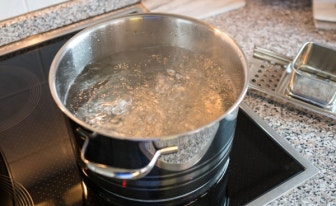



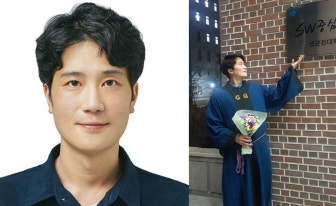
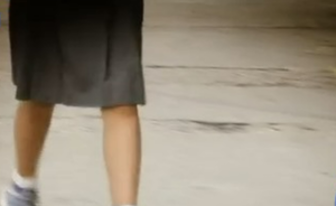



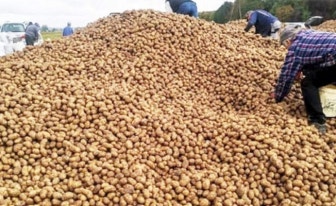

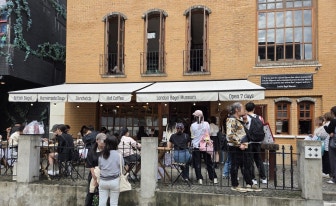






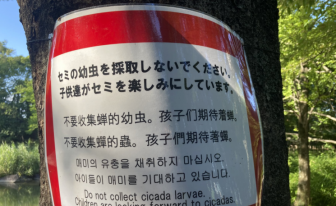
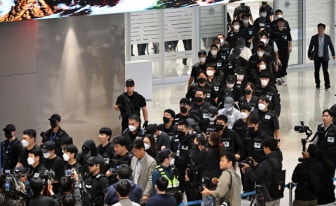
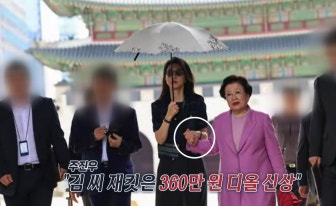
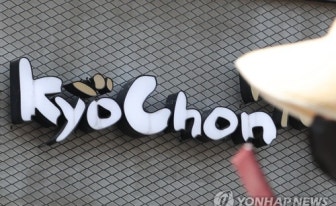
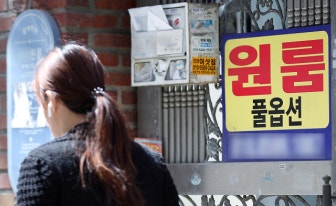





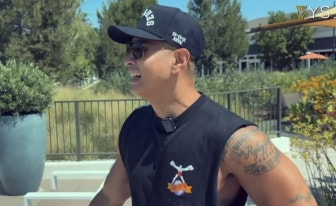
.jpg?type=nf190_130)










